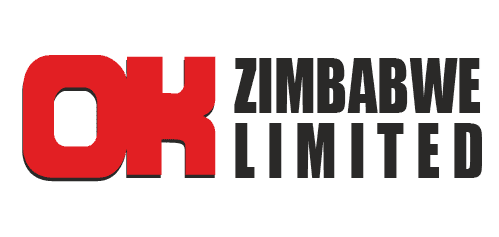Tough conditions for MSMEs loan facility
Small businesses would be in need of funds as the lockdown has hurt them the most, but they are going to find it very difficult to get loans given some of the requirements set by the Reserve Bank of Zimbabwe for its Medium Term MSME Accommodation facility.
Micro, small and medium enterprises (MSMEs) will have to pay interest rates as high as 40 percent if they are to access the RBZ’s Medium Term MSME Accommodation facility.
While it is estimated that the MSME sector is contributing more than 50 percent to the country’s Gross Domestic Product (GDP), the sector’s contribution to sustainable development has been hamstrung by a myriad of challenges, including limited access to affordable finance, and lack of collateral among others.
The proportion of MSME loans to total banking sector loans was just 3,66 percent in December 2020, marginally up from 3,57 percent in December 2016.
And to foster MSMEs increased participation in economic activities, the RBZ, has thus put in place a $500 million facility to be accessed for both capital expenditure and working capital by sector players.
It is hoped that the facility will help increase the level of access to affordable funding for MSMEs to facilitate recovery from the Covid-19 pandemic and promote sustainable active participation in economic activities.
The facility’s objective is to enhance income generation, improve the standard of living among the low-income groups, and enhance inclusive economic growth and development.
However, interest rates that MSMEs are expected to pay, seem to be on the high side and could be a major barrier to meaningful uptake of the facility.
According to the operational guidelines and disbursement modalities provided by the central bank and seen by this publication, lending institutions shall access funding from the RBZ at an interest rate of 30 percent per annum.
In turn, “Lending institutions will charge an all-inclusive maximum margin not exceeding 10 percentage-points (in this case 40 percent) above the interest rate at which funds are accessed from the Bank”.
While the 40 percent interest rate per annum seems to be reasonable when compared to current annual inflation levels of 161 percent in May 2021, they would be on the high side in the second half of the year when inflation is expected to subside.
Annual inflation is expected to fall below 55 percent by end of next month and to a single digit by year-end.
According to the central bank’s directive, credit-only micro-finance institutions will charge an all-inclusive interest rate not exceeding 3 percent per month, but this is already above month-on-month inflation which stood at 2,54 percent at the last count in May.
RBZ governor Dr John Mangudya is on record saying the drop in annual inflation will be underpinned by a targeted month-on-month inflation rate of below 3 percent.
If inflation trends go as projected, then the RBZ’s Medium Term MSME Accommodation facility’s interest rates are on the high side.
“The rates are high, but people don’t realise that yet. It will become apparent in the second half of the year,” Small to Medium Enterprises Association of Zimbabwe (SMEAZ) founder Farai Mutambanengwe said.
The facility is available for up to 12 months for working capital and up to 36 months for capital expenditure.
The issue of high interest rates is not the only one that could make it difficult for MSME borrowers to get loans.
Stringent requirements set by the central bank might result in subdued appetite for the facility, not only by the MSME, but the Banking institutions earmarked to participate in the disbursement of the funds.
One of the requirements is that the RBZ is only taking a risk with the lending institution, while the credit risk of the clients lies entirely on the lending institution.
“Lending institutions are, therefore, urged to ensure adequate credit assessment of potential beneficiaries in line with their lending policies.”
While this is a normal banking practice, it comes at a time when most financial institutions are risk-averse as seen by lower loan to deposit ratios.
Normal loan processing for MSMEs requires bank representatives to visit the borrower for KYC (know your customer), but this might not be easy amid Covid-19 restrictions and precautions, so most lenders might not be able to issue any new loans. During this period, it would be difficult for lenders to assess the real level of delinquency.
Further, participating institutions, such as banks, deposit-taking microfinance institutions, and the Zimbabwe Microfinance Fund, are required to provide their assets as collateral to access funding under this facility.
“The collateral shall include Government and Central Bank paper, which should cover 110 percent of the amount borrowed.
“The Bank, at its discretion, can accept other forms of collateral including properties which are in the name of the lending institution or ceded from the borrowers. Where the collateral is ceded from the borrowers a duly signed cession Agreement will be required as a condition precedent,” reads part of the operational guidelines and disbursement modalities document released by the Directors of the RBZ’s Banking Supervision and Financial Markets.
The RBZ is asking participating banking institutions to lend based on project viability and not immovable collateral.
“In calling for collateral, lending institutions should be mindful of the financial inclusion thrust of the facility, which seeks to avail affordable funding to MSMEs which have been negatively impacted by the Covid-19 pandemic.”
The facility comes with increased administrative work as participating institutions will be required to submit to the Supervision Division of the Bank, reports on a monthly basis, of the disbursements done during the month indicating the beneficiary, amount and performance status of the loan.
Further, lending financial institutions will be required to put in place control and monitoring mechanisms to ensure that the funds are disbursed to the intended beneficiaries and utilised for the intended purposes.
While these safeguards are necessary to prevent abuse of funds, participating banking institutions might find them burdensome.-ebusinessweekly.cl.zw










